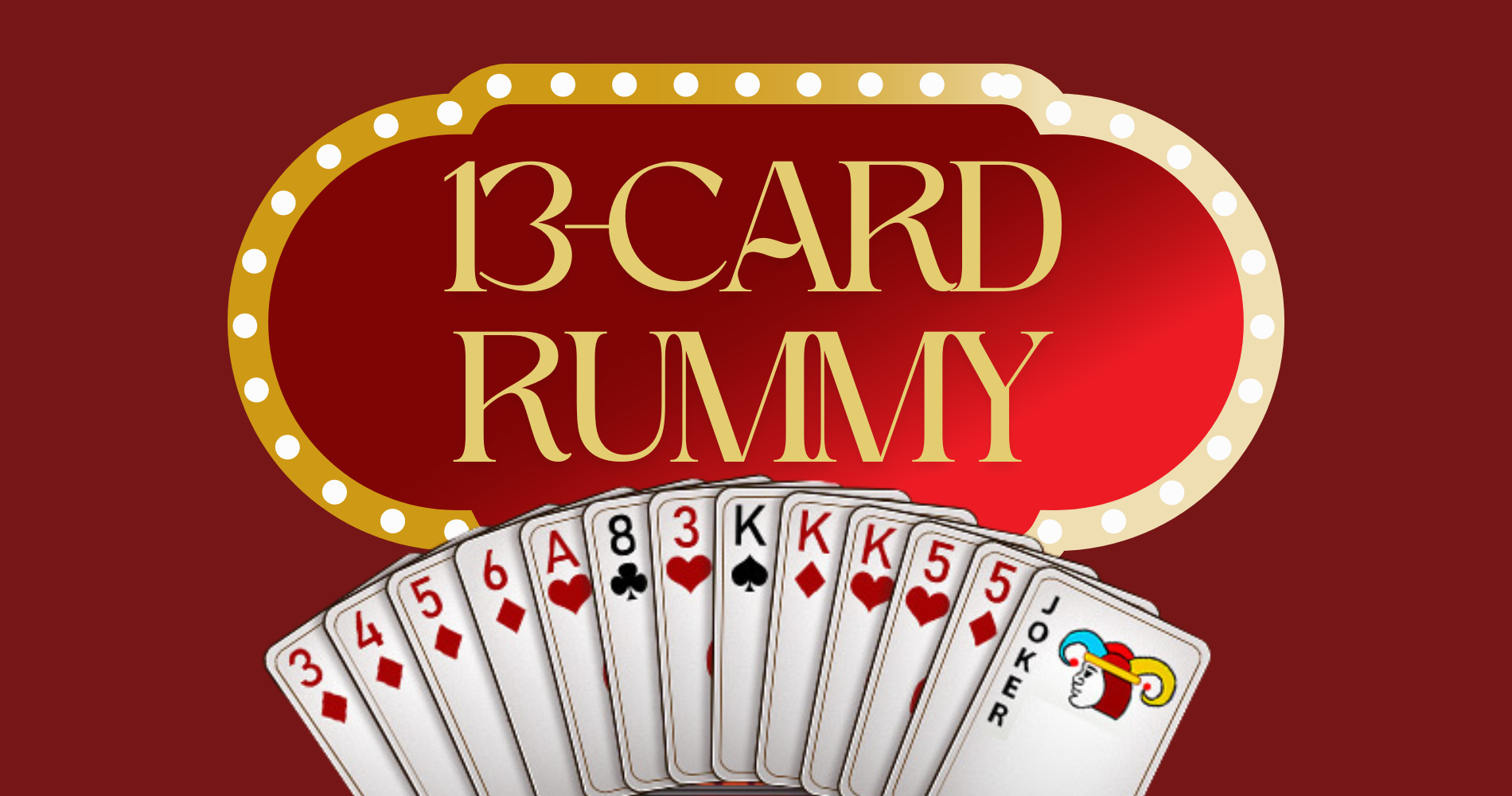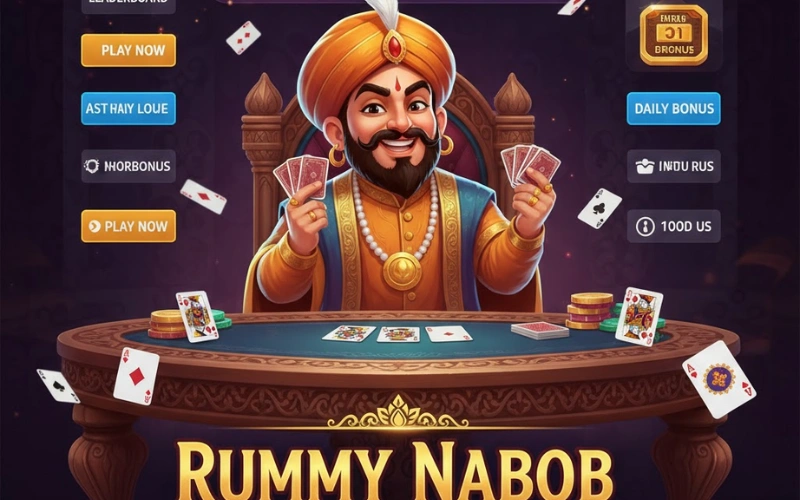Welcome to the vibrant world of 13-Card Rummy! This classic card game, widely known as Indian Rummy, combines skill, strategy, and a touch of luck, making it a favorite among card enthusiasts. Whether you’re a seasoned player or a newcomer eager to dive in, this guide will provide a thorough understanding of 13-Card Rummy and compare it with other popular rummy variants.
What is a 13-Card Rummy?
13-Card Rummy is a popular variation of the rummy family of card games. Played with two standard decks of cards plus jokers, the game’s objective is to form valid sets and sequences to declare and win. Here’s a basic overview:
- Deck Composition: Two decks of 52 cards plus jokers (wild cards).
- Number of Players: Typically 2 to 6 players.
- Objective: Arrange your cards into valid sets (three or four cards of the same rank) and sequences (three or more consecutive cards of the same suit) to declare your hand and win the game.
- Gameplay: Players draw and discard cards to complete their hand, aiming to form the required combinations before their opponents.
Comparing 13-Card Rummy with Other Rummy Games
To appreciate the nuances of 13-Card Rummy, let’s compare it with other popular rummy variants:
1. Gin Rummy
- Overview: Gin Rummy is played with a single deck of 52 cards and is typically a two-player game. Players aim to form melds, which can be sets (three or four cards of the same rank) or runs (three or more consecutive cards of the same suit). The game is known for its fast pace and strategic depth.
- Comparison: Unlike 13-Card Rummy, Gin Rummy uses only one deck and generally involves fewer players. The focus is on reducing deadwood (unmatched cards) to achieve the lowest score possible. Gin Rummy’s simplicity in terms of deck and player count contrasts with the more complex and multi-deck setup of 13-Card Rummy. The single-deck setup in Gin Rummy also makes the game quicker and often less strategic than 13-Card Rummy, which involves more intricate planning due to its larger deck and joker usage.
2. Kalooki
- Overview: Kalooki, also known as Kaluki, is another variation of rummy played with two decks of cards and jokers. It includes additional rules and scoring variations, such as requiring players to meet specific meld requirements to declare.
- Comparison: Kalooki’s added rules and complex scoring system differentiate it from 13-Card Rummy. While both games use two decks and jokers, Kalooki introduces more strategic elements and variability, which can make the game more challenging. The need to meet specific meld requirements and the complexity of the scoring system in Kalooki create a different gameplay experience compared to the more straightforward rules of 13-Card Rummy.
3. Oklahoma Rummy
- Overview: Oklahoma Rummy is a variation of Gin Rummy where the value of the initial discard determines the meld requirements for the game. It introduces an element of chance and strategy based on this discard.
- Comparison: The primary difference between Oklahoma Rummy and 13-Card Rummy lies in the impact of the initial discard. In Oklahoma Rummy, the discard influences the game’s strategy significantly, adding an element of unpredictability. This contrasts with 13-Card Rummy’s more stable gameplay, where the strategy revolves around forming sequences and sets with a fixed set of rules. The unpredictability in Oklahoma Rummy due to the discard value creates a different strategic dynamic compared to the more structured approach of 13-Card Rummy.

Mastering 13-Card Rummy: Essential Strategies
To become a proficient player in 13-Card Rummy, incorporating effective strategies is crucial. Here are some key tips to enhance your gameplay:
1. Prioritize Forming Sequences
- Strategy: Start by focusing on creating a pure sequence (a sequence without jokers). A pure sequence is mandatory for declaring your hand and forms the foundation of your strategy. Having a solid sequence helps streamline your gameplay and minimizes the risk of a high penalty.
2. Use Jokers Wisely
- Strategy: Jokers are versatile and can be used to complete sets and sequences. While they are valuable, avoid relying on them too heavily. Instead, use them strategically to complement your hand and maximize their utility without compromising the formation of pure sequences.
3. Observe Opponents’ Moves
- Strategy: Pay attention to the cards your opponents draw and discard. This can provide insights into their strategies and help you make informed decisions about which cards to keep or discard. Understanding your opponents’ moves can give you a competitive edge and enhance your chances of forming winning combinations.
4. Manage High-Value Cards
- Strategy: Discard high-value cards early in the game to minimize your potential penalty if an opponent declares. High-value cards can significantly impact your score, so managing them effectively can help you avoid large penalties and maintain a competitive position.
5. Adapt Your Strategy
- Strategy: Be flexible and ready to adjust your strategy based on the cards you draw and the evolving game dynamics. Adapting to changing circumstances can improve your chances of forming valid sets and sequences, ultimately enhancing your overall gameplay experience.
Why Play 13-Card Rummy?
13-Card Rummy offers a blend of strategy and skill, making it a compelling choice for card game enthusiasts. The game’s multi-deck setup and the use of jokers add depth to the gameplay, providing ample opportunities for strategic planning and decision-making. Compared to other rummy variants, 13-Card Rummy’s comprehensive rules and multiple-player format create a dynamic and engaging experience.
Ready to put your skills to the test? Dive into a game of 13-Card Rummy and experience the thrill of crafting winning hands. Explore different rummy formats to find the one that suits your style and elevate your gaming experience.







